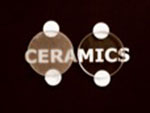Course Objective:Understanding materials is integral to the design of modern optical systems. This course introduces students to the properties of engineered optical materials such as glasses, single-crystals, transparent ceramics and polymers. It is not intended as a catalog of materials and properties, but rather, it is structured to give a clear physical rationale for performance optimization in various applications. We analyze the effect of the electronic and crystallographic properties of the lattice and that of defects (dopants, impurities and extended defects) on the generation and propagation of light. We also study how fabrication methods impact the performance of optical materials. Examples in this class cover a wide range of applications including nanophosphors for medical applications, optical coatings for high precision interferometers, glass, crystalline and ceramic laser gain media for high power and femtosecond generation, scintillator based nuclear detectors, transparent armors, and photo-engineered polymers for passive optics.
Pre-requisites: Graduate Standing or Consent of Instructor
Course Texts: There are no required textbooks for this class.
Useful references:
- J. Simmons, K.S. Potter, Optical Materials, Academic Press 1999
- H. W. Jaffe, Crystal Chemistry and refractivity, Dover 1988
- J.F. Nye, Physical Properties of Crystals: Their Representation by Tensors and Matrices, New York, 1986
- M. Fox, Optical Properties of Solids, Oxford Master Series in Condensed Matter Science
- M. Barsoum, Fundamentals of Ceramics, Cambridge, Mc-Graw Hill, 1996
- G. Blasse, B.C. Grabmaier, Luminescent materials, ?Springer-Verlag, ?1994
- B. Henderson, G.F. Imbush, Optical Spectroscopy of Inorganic Solids, ?Oxford University Press, 2006

Transluscent and transparent ceramics of YAG
List of topics covered:
- Crystalline lattices and defects
- Chemical bonds, coordination number, symmetry
- Band-structure
- Tuning the linear refractive index and birefringence
- Non-linear susceptibilities
- Phonons
- Point defects, dislocations, grain-boundaries
- Mechanical properties of optical materials
- Crystal field, spectroscopy of transition ions and lanthanides
- Laser damage
- Material design and fabrication methods
- Phase diagrams
- Nanoparticles
- Thin-films
- Glasses and glass-ceramics
- Single-crystals
- Optical ceramics
- Polymers
Assessment:
- 5 Homework: 20 pt each
- 1 midterm exam: 40 pt
- 1 oral presentation: 20 pt
- Final Exam: 40 pt